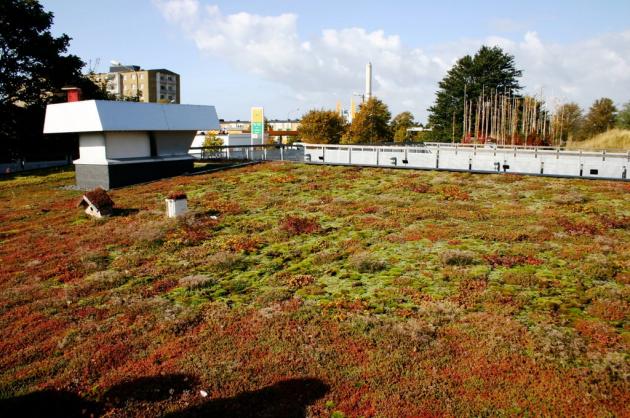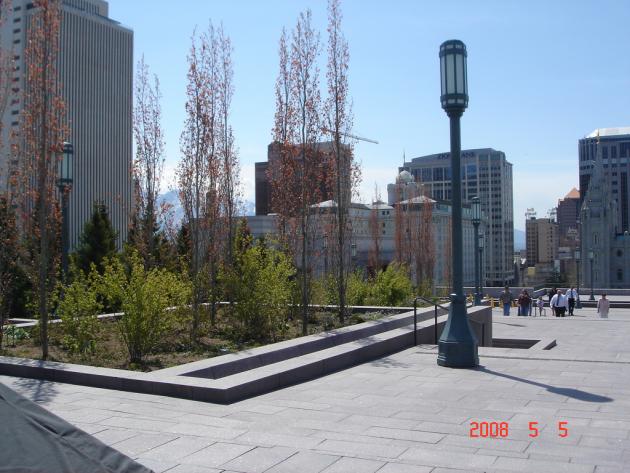Two basic types of green roofs are commonly constructed; extensive and intensive.
I. Extensive Green Roofs
PROS
- Uses shallow soil medium making it lighter weight
- Harsh conditions favor drought tolerant plants such as sedums
- Minimal maintenance
- Relatively low cost
- Pre-planted modules are available for ease of installation
CONS
- May require occasional maintenance such as weeding
- May require additional irrigation during extended dry periods

II. Intensive Green Roofs
PROS
- Uses deeper soil medium
- Can support trees
- Can use a large variety of plant types
- High wildlife habitat value
CONS
- Stronger roof structure is needed to support the weight so may not be appropriate for older buildings
- Tend to be more expensive
- Similar landscape maintenance to ground level landscapes
- May require additional irrigation

Additional Resources:
An Introduction to Green Infrastructure Practices
Green Roofs as Water-Wise Landscapes
West
Low Impact Development in Northern Nevada Green Roofs
Southeast
Florida: Green Roofs / Eco-roofs
Mississippi: Green Roofs for Southern Landscapes
